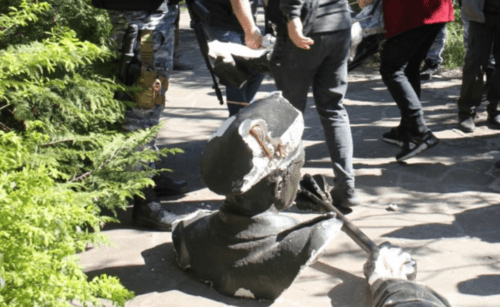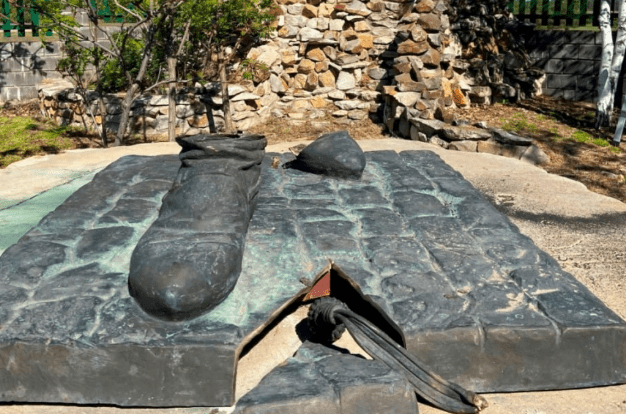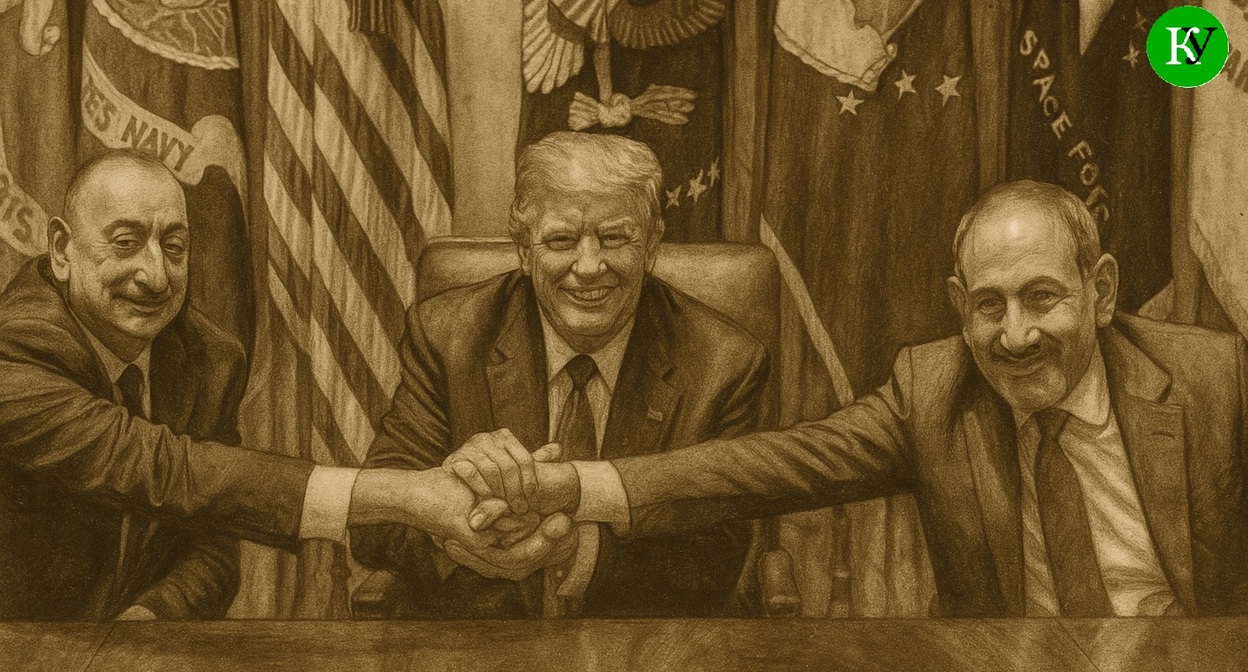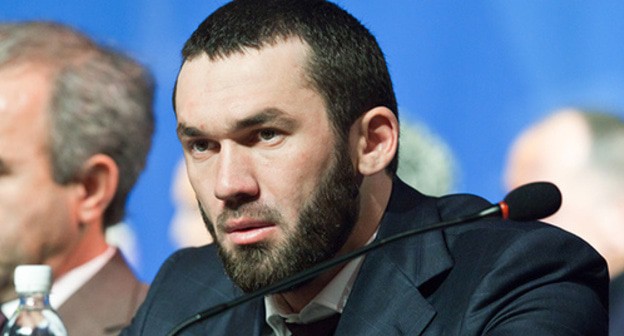Future of Krasnov’s sculptures left to discretion of court
Court marshals must preserve confiscated property, but only works of art included into the Museum Fund are subject to special protection. In the case of the seizure and destruction of sculptures from the Yelansky Cossack Museum, their fate can be determined by the court.
Court marshals are responsible for the safety of confiscated property, suggests lawyer Timur Filippov. “In accordance with Federal Law No. 229-FZ, court marshals are required to ensure proper storage of seized property. Violation of the above-mentioned duties may entail disciplinary, administrative, or other liability. If it is recognized that a sculpture has been destroyed as a result of illegal actions or inaction of a court marshal (for example, violation of storage rules, lack of a transfer act, lack of a court’s decision on destruction), an owner has the right to compensation for the damage caused at the expense of the treasury of the Russian Federation. In this case, the basis for compensation will be the proven fact of violation of official duties and a causal relationship between the actions of the court marshal and the loss of property. If the statue has been destroyed in execution of a court’s decision, then no compensation is provided for by law in this case,” lawyer Timur Filippov explained.
“If the sculpture is not included in the Museum Fund, it can be seized as part of enforcement proceedings as ordinary property”
Lawyer Timur Filippov has also noted that the procedure for the seizure and storage of works of art from private museums depends on the legal status of the specific work of art. “If a sculpture is officially included in the Museum Fund of the Russian Federation, then it is subject to special legal protection in accordance with the Federal Law of 26.05.1996 No. 54-FZ ‘On the Museum Fund of the Russian Federation and Museums in the Russian Federation’. In this case, the item may not be subject to collection, division, or other alienation. Its seizure is possible only in exceptional cases provided for by the law and in compliance with the established procedure. If a sculpture is not included in the Museum Fund, it may be seized within the framework of enforcement proceedings as ordinary property. In accordance with the law, a court marshal is obliged to ensure the safety of the seized property (including works of art), transfer it for safekeeping and, if necessary, sell it in accordance with the established procedure. Therefore, there is no special procedure for the seizure of works of art from private museums. However, if an item has the status of a museum value, separate security procedures are to be applied,” the lawyer has noted.
 At the same time, Timur Filippov has explained that in accordance with Article 13 of the Federal Law “On Combating Extremist Activity”, information materials may be recognized as extremist by the court at the place where those materials were discovered or distributed or at the address of the organization that produces them, in the manner established by the laws on administrative proceedings. “And simultaneously with the decision to recognize information materials as extremist, the court makes a decision to confiscate them. By a court’s ruling, a statue may be recognized as the subject of an administrative offense, for example, in the event of a violation of the laws on combating extremist activity. And in this case, the court may recognize it as subject to confiscation within the framework of administrative proceedings,” lawyer Timur Filippov has concluded.
At the same time, Timur Filippov has explained that in accordance with Article 13 of the Federal Law “On Combating Extremist Activity”, information materials may be recognized as extremist by the court at the place where those materials were discovered or distributed or at the address of the organization that produces them, in the manner established by the laws on administrative proceedings. “And simultaneously with the decision to recognize information materials as extremist, the court makes a decision to confiscate them. By a court’s ruling, a statue may be recognized as the subject of an administrative offense, for example, in the event of a violation of the laws on combating extremist activity. And in this case, the court may recognize it as subject to confiscation within the framework of administrative proceedings,” lawyer Timur Filippov has concluded.
Lawyer Felix Wertegel emphasizes that if a court decides to confiscate property, the right of ownership of any property is lost, and its former owner may no longer claim any compensation for damages. “Everything belongs to someone. And here, as a result of the court’s decision, private property becomes state property,” lawyer Felix Wertegel told a “Caucasian Knot” correspondent.
Exhibits in state museums are protected by the law, requiring careful handling, but in the case of a private museum, the attitude towards an item depends on whether it is included in the register of cultural values, emphasizes an art historian, who preferred to remain anonymous. “If they were included, they are considered objects of cultural heritage. If not, then they are simply ordinary property, and there is a regulation on the procedure for storing the property,” he has noted. At the same time, the art historian has noted that the owner of the sculptures may go to court with a claim on vandalism against the court marshals who confiscated the sculptures.
For example, Kolchak has not been rehabilitated, but there is a monument to him
When speaking about the legality of storing the sculptures to ataman Pyotr Krasnov, who was not rehabilitated after being convicted by a Soviet court, the art historian has emphasized: the fact that Pyotr Krasnov was not rehabilitated is not an obstacle to installing statues to him. “For example, Kolchak has not been rehabilitated, but there is a monument to him,” the art historian noted (a monument to Kolchak was installed, in particular, in Irkutsk, – note of the “Caucasian Knot”).
The question of whether the confiscated statues are subject to storage does not have a clear answer, historian Yan Rachinsky points out. “Confiscated property is subject to careful storage until a further court’s decision. If these are works of art, then they are subject to storage regardless of who is depicted on them. But if the court has ordered confiscation and destruction, then those items can be destroyed,” historian Yan Rachinsky explained.
This article was originally published on the Russian page of 24/7 Internet agency ‘Caucasian Knot’ on May 17, 2025 at 07:49 pm MSK. To access the full text of the article, click here.
*On March 21, 2022, the Tverskoi Court of Moscow banned the activities in Russia of the Meta Company, owning the Facebook, Instagram, and WhatsApp, in connection with extremist activities.
Source: CK correspondent






![Tumso Abdurakhmanov. Screenshot from video posted by Abu-Saddam Shishani [LIVE] http://www.youtube.com/watch?v=mIR3s7AB0Uw Tumso Abdurakhmanov. Screenshot from video posted by Abu-Saddam Shishani [LIVE] http://www.youtube.com/watch?v=mIR3s7AB0Uw](/system/uploads/article_image/image/0001/18460/main_image_Tumso.jpg)